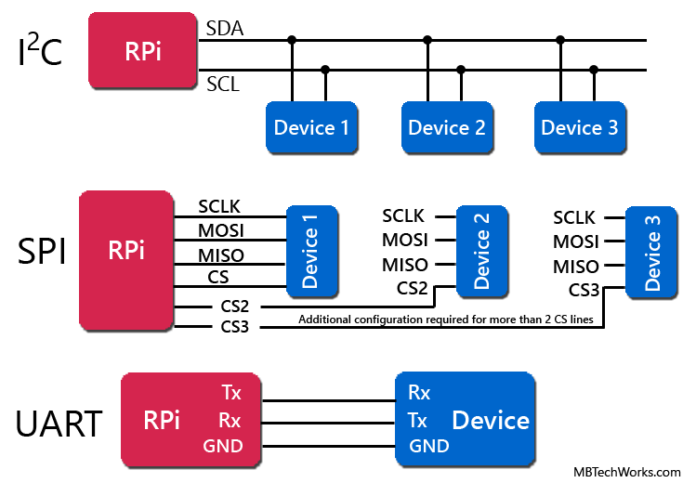Remember when printers, mice, and modems had thick cables with those huge clunky connectors? The ones that literally had to be screwed into your computer? Those devices were probably using UARTs to communicate with your computer. While USB has almost completely replaced those old cables and connectors, UARTs are definitely not a thing of the past. You’ll find UARTs being used in many DIY electronics projects to connect GPS modules, Bluetooth modules, and RFID card reader modules to your Raspberry Pi, Arduino, or other microcontrollers.
UART stands for Universal Asynchronous Receiver/Transmitter.
Advantages and Disadvantages of UARTs
No communication protocol is perfect, but UARTs are pretty good at what they do. Here are some pros and cons to help you decide whether or not they fit the needs of your project:
Advantages
- Only uses two wires
- No clock signal is necessary
- Has a parity bit to allow for error checking
- The structure of the data packet can be changed as long as both sides are set up for it
- Well documented and widely used method
Disadvantages
- The size of the data frame is limited to a maximum of 9 bits
- Doesn’t support multiple slave or multiple master systems
- The baud rates of each UART must be within 10% of each other




































